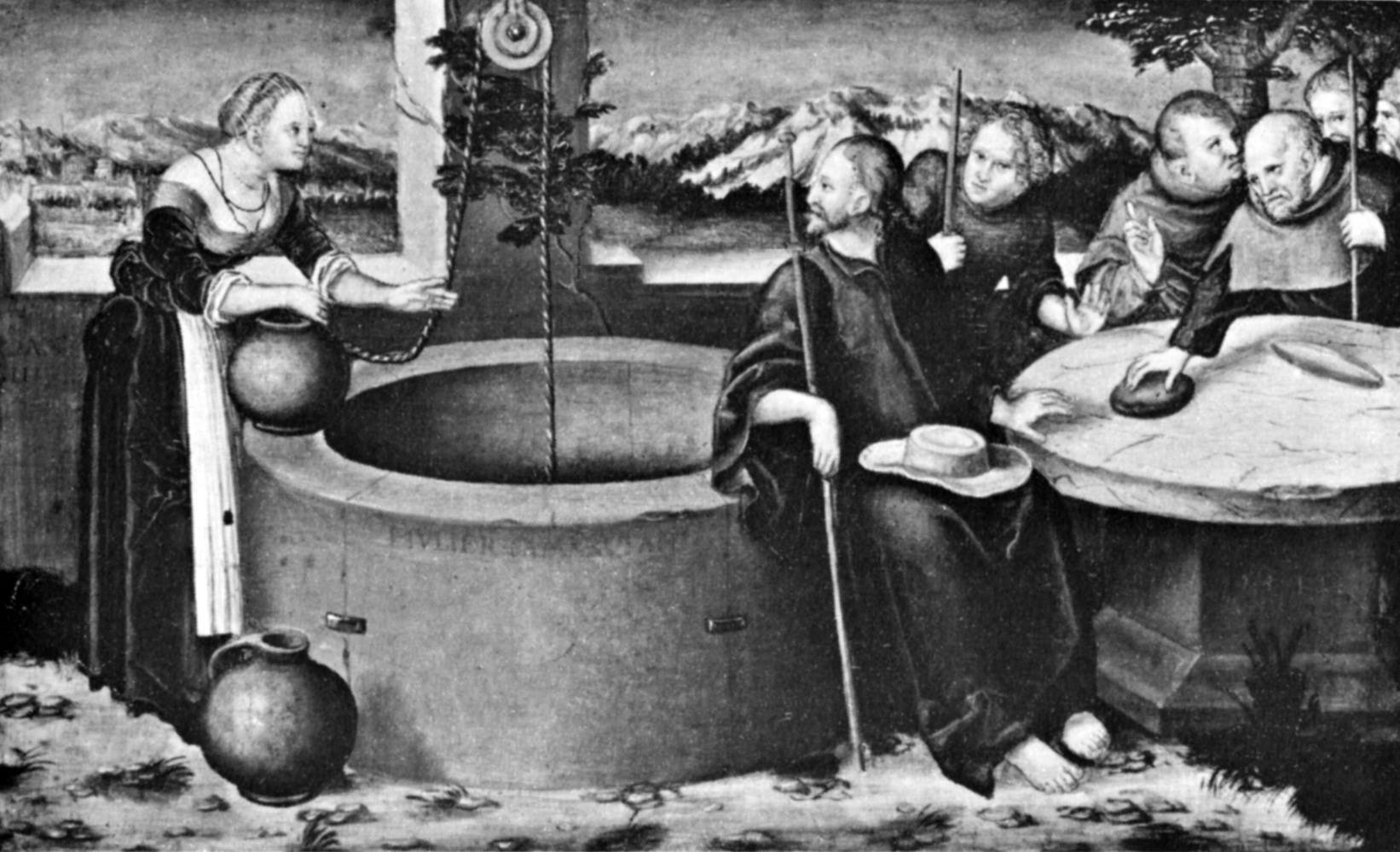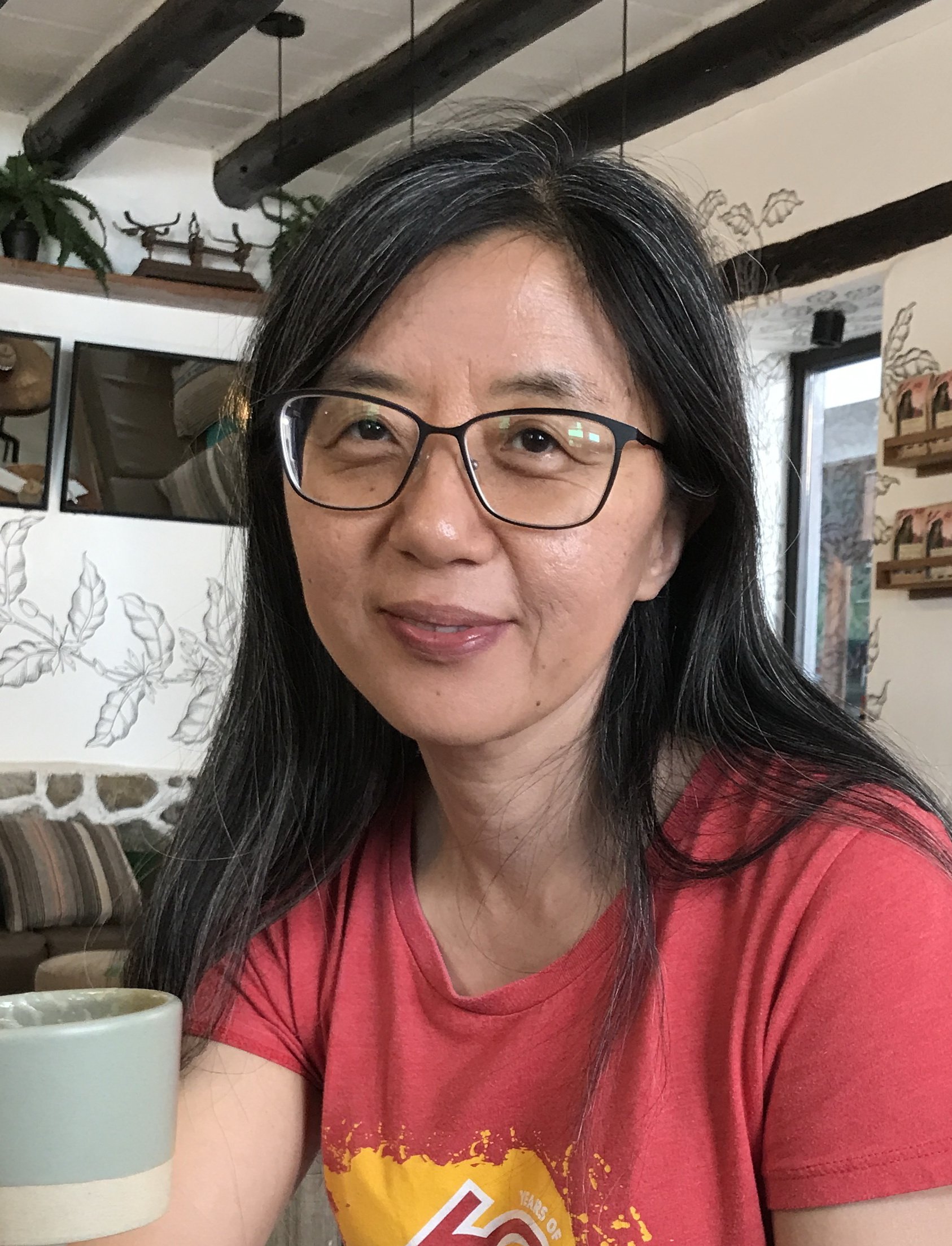The Samaritan Woman at the Well
by Min Wang de Jong
A drawing of the scene by seminary student Juroce Miranda, who studied it last trimester
John’s Gospel, chapter four, describes how Jesus meets the Samaritan woman at Jacob's well, a place connected to the patriarch of the Old Testament. Through his powerful words, he heals her wounded past and creates a new future. Like in other scenes, John leads us on a journey from physical perception to soul-spiritual reality.
On the physical level, consider how tired and thirsty Jesus must be after walking through the desert around noon time. A Samaritan woman comes to draw water at the well. He asks her to give him a drink. She also must have had a very difficult life because she has had to walk a long way during the hottest time to fetch water and she is alone. The woman responds, “how is it that you, a Jew, ask a drink of me, a woman of Samaria?” (4:9 New Revised Standard Version) Here John puts a note: “Jews do not share things in common with Samaritans”. (4:9) Jesus breaks this barrier. Next, he offers the gift of God--living water, which points to the spiritual. This woman responds with a reverential title ‘sir’, her vision of Jesus going up from ‘a Jew’ to ‘sir’. But she immediately sinks back to the physical level: Look at him. No bucket. Where is the living water? He couldn’t be greater than her ancestor Jacob. Jesus describes how through this living water people would thirst no more and would attain eternal life. Now in the woman’s soul, her desire is triggered, and she asks him to give her this water, and it would solve her thirst and heavy toil.
“Jesus et la Samaritaine” by Odilon Reddon
But he confirms that the water that he will give will become “a spring of water gushing up to eternal life” (4:14). The longing for the living water melts her doubts. In her mind, whoever could offer this living water would give her life again, for she now says, “Sir,give me this water, so that I may never be thirsty or have to keep coming here to draw water. “(4:15)
Surprisingly, Jesus doesn’t respond to her appeal, but requests that she go call her husband. The woman tells him she has no husband. Jesus acknowledges she has told the truth of her life, as in fact she has had several husbands, and is presently living with someone to whom she is not married. But now he asks her to call her husband. In the language of the soul, what is the role of the husband in a woman’s life? Both men and women contain masculine and feminine aspects. In each person, the soul aspect can be seen as feminine and the spirit as masculine. In Judges 13 there is the story of the parents of Judge Samson. Samson’s mother is barren, yet an angel appears to her in a field and tells her that she will have a son. The angel instructs her regarding her future life with her son. She tells her husband, and only then realizes she didn’t ask who the angel was. Her husband prays to God to see the angel again. The angel reappears to the woman in the same field and she runs quickly to get her husband who has the courage to invite the angel for a meal and have a conversation with him.
“An Angel Announces the Birth of Samson to Manoah and his Wife”
Medieval Manuscript by Jean de Sy
So here the husband’s role is to connect to God, just like our spirit guides our soul to have a right relationship with God through praying; inviting the angel for a meal and asking questions all are loving actions. The Samaritan woman is a love- seeker. Her soul is yearning to have good guidance. All the men in her soul life couldn’t offer the proper relationships with God. Now Jesus acknowledges her truthfulness, because she says she does not have a husband. Her soul is seen and accepted fully by Jesus.
Seen in this way by him, she realizes Jesus is a prophet of God. She asks her deep question about where to worship God. Jesus tells her ‘God is spirit and those who worship him must worship in spirit and truth’. (4:24) He then reveals that he is the Messiah, the living God.
She hears about the Messiah and trusts he will teach her people. When Jesus tells her He is the Messiah, we can imagine the woman’s soul as the noon sun, so bright! Her strong will tells her to share her knowledge of Jesus Christ with all the people she loves. She runs away even without her water jar because she knows she will come back with her people. She is the first apostle in John’s gospel, to tell other people the good news! Her soul gets healed through the conversation with Christ, overcoming her prejudice, her doubts, her fear by her wonder, her reverence and her willing act to bring her people to the Messiah. Most people of this community through this woman’s testimony fly to Jesus. They ask him to stay and strengthen their souls. They also receive the living water through their own experience. Later, they say to the woman, “It is no longer because of what you said that we believe, for we have heard for ourselves, and we know that this is truly the Savior of the world'’ (4:42) Every soul of this kind who encounters and experiences Jesus Christ can be healed.
“Jesus und die Samaritanerin” by Franz Tymmerman 16th Century
Therefore, we experience the encounter between Jesus Christ and the Samaritan woman from the physical to the soul to the spiritual levels. We need to lift up our vision higher and higher, or we would create a lot of barriers, prejudices, doubts to block out our understanding of John’s gospel.
Our Author:
Min Wang-de Jong was born in China. Before she met Waldorf education she had been a high school chemistry teacher for more than 10 years. In 2009 she came to the US, learning and practicing curative education, social therapy and biodynamic gardening in Camphill. In 2021 she joined the DLP(distance learning program) of The North American Seminary. Now she is a full time student at The Christian Community Seminary in Toronto, Canada.







